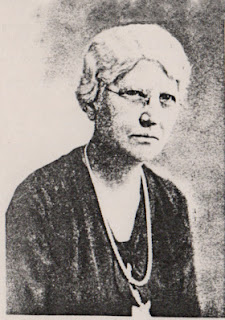Christmas In Mud Lake
By Maude Lois Ashenfelter Ravenscraft
Champion
In 1914 my father, Elmer Ashenfelter, had a homestead about
35 miles from Idaho Falls. My husband,
Sam Ravenscraft, who had been a station agent for the O.S.L. Railroad in Dell, Montana
was stricken with a progressive illness and had to give up his job. We had three children; Fern, who was 7; Earl,
5; and Sammy, 1 year old. We were
expecting another child in June. In May
we moved to my father’s homestead. He
had a one-room cabin and we had a large tent that we slept in. We cooked and ate and my father slept in the
cabin.
In June we went to Rupert, Idaho, where Florence was born on
June 21. We went back to the ranch July 6. The children and I were never back to town
until the next February. There had been
a schoolhouse built about three miles from where we lived and a post office called
Level established. Fern walked to school
with some neighbor children, the Mitchell’s, who lived more than a mile farther
than we. She could make it four days a
week but generally on Friday she would have to stay home and rest.
There were a few families who lived close to the
schoolhouse. These were Latter-Day Saint
people who had come from Mexico and were making a new start at building homes. These people were all very poor, but they
were cheerful and seemed determined to make the most of their
opportunities. They thought that Mud Lake,
as this area was called, should have a Christmas tree and celebration, so made
their plans. They went to Roberts, a
small town a little closer than Idaho Falls, and secured some donations of
treats from merchants. They had candy,
nuts, and apples for the children. We
were invited to come early, around five as I can remember. My father had a team and farm wagon. We put hay and quilts in the bottom of the
wagon and put the children in. We picked
up several neighbors—one with three children, and took them with us. Sam wasn’t
with us as he had gone to Rupert to see his parents and sister.
There was a
program prepared of songs and readings.
The treats were passed out. Then
some of the people came in with a big box of sandwiches, plenty for everyone. They tasted so good and I said to the ladies,
“Where in the world did you get enough ham for all these sandwiches?’ She said the meat wasn’t ham, that it was
jackrabbit. The sandwiches were good
anyway. At that time the rabbits were
healthy, we hadn’t heard of tularaemia.
After we had eaten our sandwiches the men folks turned the
desks around with the desk part against the wall. We put quilts on the desks and put our little
children to bed. The evening and most of
the night was then spent in dancing to the music of a violin. They would stop dancing once in awhile and
someone would sing. We had a very
pleasant time. It was in the wee, small
hours that we took our children and went home.
It was a bright spot in along lonesome weeks spent on the ranch.
In all the months I spent in Mud Lake it was the only
gathering I ever attended. It has been
so many years, 43 to be exact, I don’t remember if it was Christmas Eve or
Christmas night.
Many times, especially after I became a member of the L.D.S.
church I’ve wondered how these people prospered and if they still live in that
community. We moved to Rupert in Feb.
1915. Sam passed away in October of that
year. My father sold his homestead and
came to Rupert to live with me and the children, so I’ve never been in contact
with any of them.

